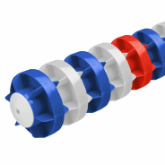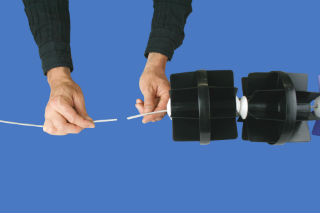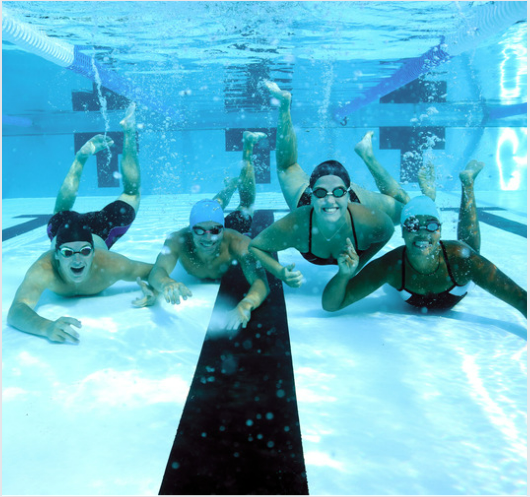15 Meter Resurfacing Markers - The Underwater Swimming Rule

Explaining Swimming's 15 Meter Mark
New swimmers, swim parents, coaches, and aquatics directors must all learn the 15 meter resurfacing rule or underwater 15 meter rule. Swimmers need to know this rule because breaking this regulation results in disqualification - ouch! Certain techniques used by swimmers cause them to spend more time swimming below the surface for competitive advantage.The rule sets limits on the distance a swimmer can travel underwater without breaking the surface. This rule is followed by FINA, USA Swimming, NFHS, ISA Swimming - so don't ignore it!
Underwater Swimming Techniques: Submarine - Dolphin Kicking - Streamline
Submarine, dolphin kicking, and streamline are all terms used to describe underwater tactics used in competitive swimming. But why would a swimmer want to swim underwater? Swimmers that master the skill of underwater swimming hold their upper bodies in a streamlined position and add dolphin kicking. Once perfected, this technique can be extremely fast and efficient, as swimmers encounter less resistance than they would find on the surface due to the lack of drag created by surface waves.
The 15m Underwater Rule and Its History
The Rule: After both starts and turns, a swimmer's head must break the surface at a distance no greater than 15 meters. This rule applies to Freestyle, Backstroke, and Butterfly. History: Interestingly, the 15m rule was introduced for different strokes at different points in time over the history of competitive swimming, beginning with Breastroke. FINA's Technical Committee first applied the 15m rule to Breaststroke in 1956, in response to Masaru Furukawa's performance at the Melbourne Olympics. The rule no longer applies to Breastroke, since more strict breaststroke rules have replaced it. The 15m rule was applied to Backstroke in 1988, after the underwater dolphin kicking technique of both Daichi Suzuki and David Berkoff churned water and controversy at the Summer Olympics in Seoul. The rule was later applied to Butterfly in 1998, and later to Freestyle.
Racing Lane 15m Markers
To meet 15 meter resurfacing qualifications, swimming pool racing lanes must have a distinctly colored mark 15 meters from each end wall of the pool. The distinct color allows the marker to be differentiated from surrounding racing lane floats, so it can be easily viewed by athletes and officials. USA Swimming encourages pool operators to make permanent reference markers on the side of each racing lane course, so swim officials can easily verify that 15m markers are properly located. Any swimming pool hoping to offer a competitive swim program should make sure that their racing lanes are properly marked with resurfacing markers. Does your pool have lane ropes that lack 15 meter markers? Don't despair. Retrofitting racing lanes with these markers is very common - and can be performed easily in the field.
3 Techniques For Adding 15m Markers To Racing Lanes:
1. Painting: A racing lane float at the 15 meter distance can be painted a distinct color to serve as a resurfacing marker. This technique provides a quick solution and requires no restringing, but painted floats can quickly lose their paint if lanes are dragged over the deck, over pool coping, or encounter interference from other lane floats when being deployed or taken up onto racing lane storage reels. 2. Duct Tape: Once again - most problems can be resolved with duct tape, including this one! Distinctly colored duct tape makes an excellent resurfacing marker (thanks to Emily for pointing this out). 3. Restringing: Restringing racing lanes is also a great option. Shipping lanes back to the manufacturer can lead to expensive freight fees, so pools are advised to perform the restringing in the field themselves. This usually requires full replacement of racing lane cable. Need Advice? How To Quickly Restring Racing Lanes Restringing is a simple process - read Kiefer's tips and tips for restringing racing lanes.
Looking for more advice?
Check out our short and helpful articles on staying warm in the pool and open water swimming safety. Let us know what you think of our blog posts - we'd love to hear from you! See you at swim practice, Robin









Leave a Comment
Your email address will not be published. Required fields are marked *